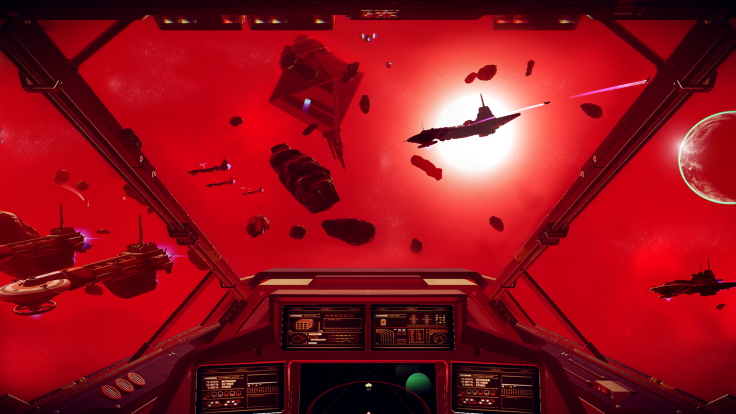'No Man's Sky': 5 Lessons Indie Devs Can Learn From Its Mixed Reviews, Post-Release Drama

“No Man’s Sky” famously suffered from divisive reviews and a dramatic release, and there’s a lot that indie developers can learn from its predicament. Here are five tips every independent creator should consider given this space game’s troubles.
1) Make Promises You Can Keep: Quite possibly the biggest fallacy of “No Man’s Sky” is that the final game doesn’t include many features that were advertised and teased fairly close to its release date. From multiplayer to factions and nameable ships, it’s clear that Hello Games had to strip away some of its intended vision to meet deadlines.
Given the major backlash that that situation continues to create, indie developers must be sure to only advertise key aspects that will assuredly make it into the digital or retail release. The occasional exclusion is OK as development changes, but, especially in the Internet era, it should be remembered that every preview or appearance can be dug up again for future reference. Every preview is essentially a pact with fans, so only discuss what can be delivered.
2) Communicate Your Game: Related to the missing features is the concept of communication. Both during and after release, “No Man’s Sky” has been steeped in an obvious lack of communication from its developers. Even a year and a half after being revealed, it wasn’t clear what players actually do in the game. Omission essentially let public assumption run wild and created an unattainable hype barrier. Even today, Hello Games has yet to comment on precisely why the finished game is so bare-bones.
One of the biggest benefits of being an indie creator is having a direct line of communication to followers. That means it’s possible to detail new features and address lingering concerns without the red tape of major press or publishers. Prior to launch, Hello Games could have been clearer about “No Man’s Sky’s” intricacies through its own blog. If consumers had been warned about the scrapped features and been given a plausible rationale in July, the hate storm may never have assembled in August. Use indie-level communication whenever possible.
3) Be Careful With Release Dates: “No Man’s Sky” chronically suffered from release delays that essentially sparked the negative perception that surrounds the game to this day. Shortly after saying everything would be available in June, the official launch was pushed to August. This led to death threats and provided fuel for concerns that the game was in trouble.

Hello Games tried everything in its power to offer an accurate release date, but the team ultimately failed. Other indie creators simply must be more certain of their ambitions and calendar management. These days a good game only needs about a month of press hype in advance, so keep release details hidden even if they’re known internally. Delivering a product in a timely manner without changes shows professionalism and makes players feel good about the brand.
4) Watch Out For Triple-A Marketing: “No Man’s Sky” was in many ways an experiment to see if Sony could effectively market an indie title as a triple-A experience. Needless to say, that publisher connection may have worked against it. Between headline appearances at E3 and other major conventions, it was assumed that this product was a lot bigger than it ended up being. PlayStation pushed a small concept in such a big way that Hello Games couldn’t have possibly delivered.
With that in mind, it’s worth noting that the triple-A hype machine isn’t always good. Some of the most beloved indie titles, like “Gone Home,” “The Stanley Parable” and “Undertale,” were barely marketed at all. In the end, the content spoke loud enough to achieve viral success. Major publisher connections aren’t always terrible, but they should be used sparingly if there’s enough faith in the base idea.
5) Scope Does Not Equal Success: “No Man’s Sky” does offer a universe of 18 quintillion planet-sized planets to explore, but it’s no secret that there’s not a ton to do in that space even if you find the loop enjoyable. Hello Games dreamed big, so they made a map that reflects that ambition. Reviews tell us, however, that that scope doesn’t pay off.
Where indie games have generally had the most success is in providing shorter experiences with greater attention to detail. A prime example of this strategy in action is Playdead’s “Inside.” The final game is only a few hours, but its lore and puzzles are so carefully designed that the title is on many shortlists for game of the year. That doesn’t necessarily mean every indie game must be short, but a project’s size is probably best gauged by the amount of team members it has.
“No Man’s Sky” is available now on PS4 and PC.
Do you think “No Man’s Sky’s” release should be viewed as a cautionary tale for indies? Tell us in the comments section!
© Copyright IBTimes 2025. All rights reserved.




















